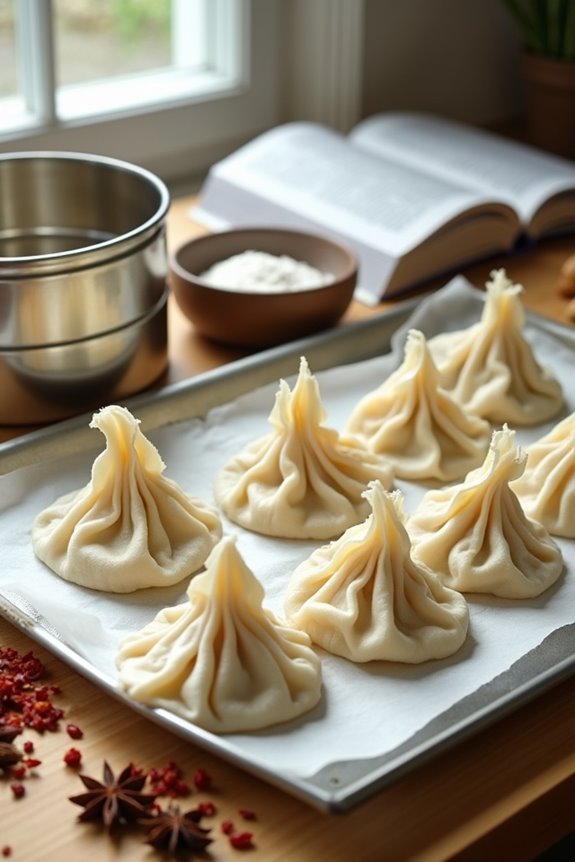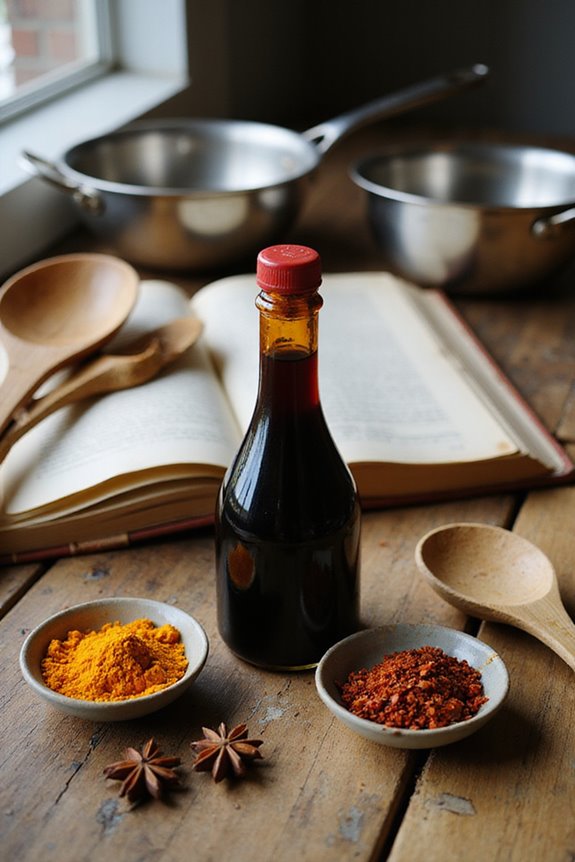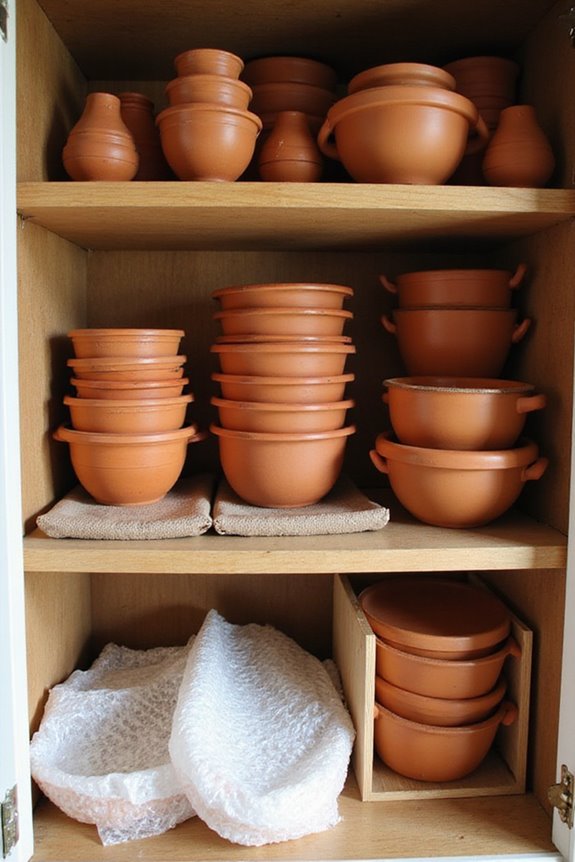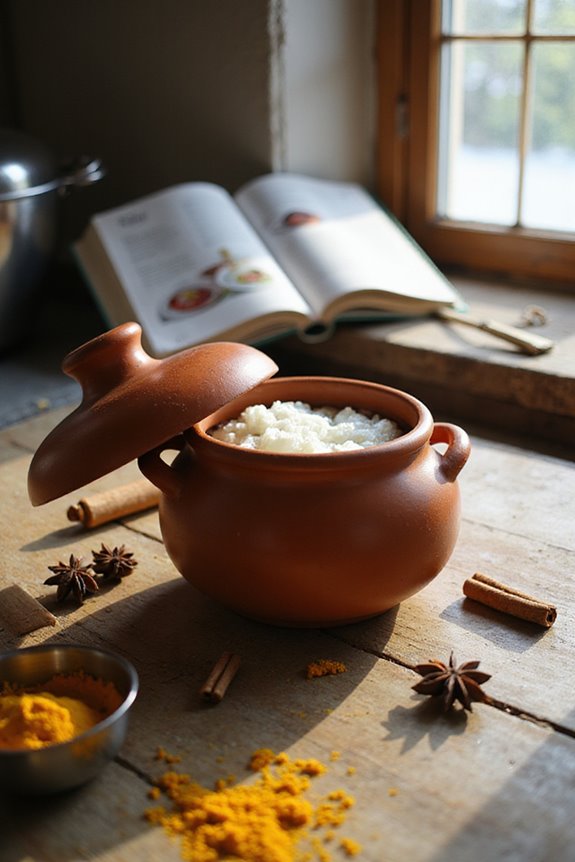Freezing dumplings is a delightful way to keep our favorites on hand! First, we’ll pick hearty fillings and use wheat dough wrappers, as they freeze best. Let’s lay them on a parchment-lined tray to prevent sticking—just make sure they’re not crowded, like a holiday party! Pop them in the freezer for 2–3 hours. Finally, we’ll wrap them tightly in bags to keep them fresh. Stick around for more magical tips on cooking those frozen beauties!
Key Takeaways
- Use a parchment-lined tray to freeze dumplings in a single layer, preventing sticking.
- Brush dumplings lightly with oil to retain moisture and prevent freezer burn.
- Freeze for 2-3 hours until firm before transferring to zipper-lock bags.
- Ensure bags are not overcrowded to allow maximum airflow and minimize damage.
- Consider double-wrapping with aluminum foil for added protection against freezer burn.
Choosing the Right Dumpling Type for Freezing
When it comes to freezing dumplings, choosing the right type can make all the difference in preserving their delightful flavors and textures! Here’s a quick guide to help us select the best dumpling types and filling options for freezing:
- Wheat Dough Wrappers: These freeze well; think potstickers or jiaozi.
- Delicate Wrappers: Keep an eye on thin ones, like har gow; they’re prone to sticking!
- Hearty Fillings: Meat-filled dumplings maintain their juiciness; veggie fillings need moisture control.
- Avoid: Soup-filled dumplings unless we flash freeze them! Additionally, using proper air fryer liners can prevent sticking during cooking and help maintain the integrity of the dumplings when they’re frozen.
Preparing Dumplings for Freezing
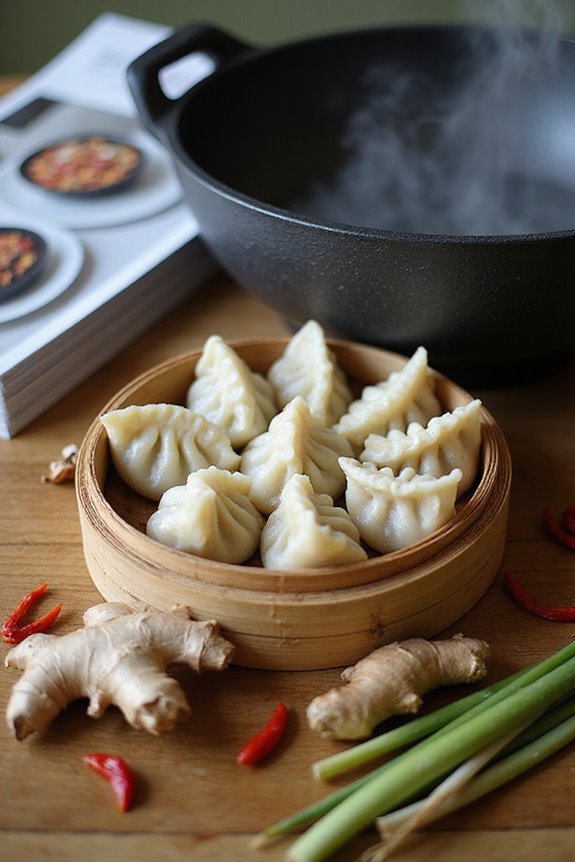
Preparing dumplings for freezing can feel like a magical kitchen adventure! First, let’s start by making sure we understand our dough types, since not all freeze equally.
- Separate Placement: Place each dumpling on a tray so they don’t stick together—nobody wants a dumpling sticky situation!
- Oil Application: A gentle oil coating keeps them from drying out and adds a lovely touch.
Once you’ve got them ready, remember not to refrigerate them before freezing; that just complicates things. We are eager to enjoy those frozen delights! With careful preparation, we’re setting ourselves up for a delicious future-filled feast. Additionally, ensure you use high-density bamboo stakes to support any indoor herbs or greens you might want to accompany your dumplings. Let’s get those dumplings prepared and ready for the freezer—it’s almost like a winter wonderland of tasty surprises!
The Freezing Process Explained
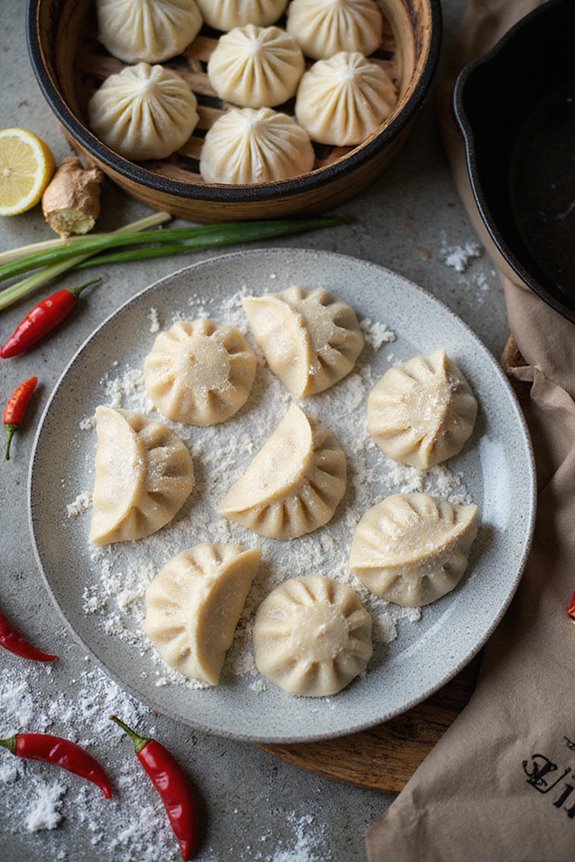
Now that we’ve got our dumplings all set for their chilly adventure, it’s time to explore the enchanting process of freezing them! First, let’s use delightful freezing techniques. We place dumplings on a parchment-lined tray, spaced out to prevent sticky situations. After 2–3 hours in the freezer, they’ll be perfectly frozen!
Next, a thin brush of oil or flour keeps our dumplings safe and sound. Remember, moisture is our enemy, so let’s guarantee everything cools and dries well before they go in the freezer. Additionally, using high-quality materials for cooking tools, like stainless steel, can enhance our overall dumpling preparation experience.
Lastly, wrap them tightly to guarantee excellent dumpling preservation. Label the bags, and voilà! We’re ready to enjoy these tasty treasures later—just like a cozy movie night, only with dumplings!
Optimal Storage Techniques
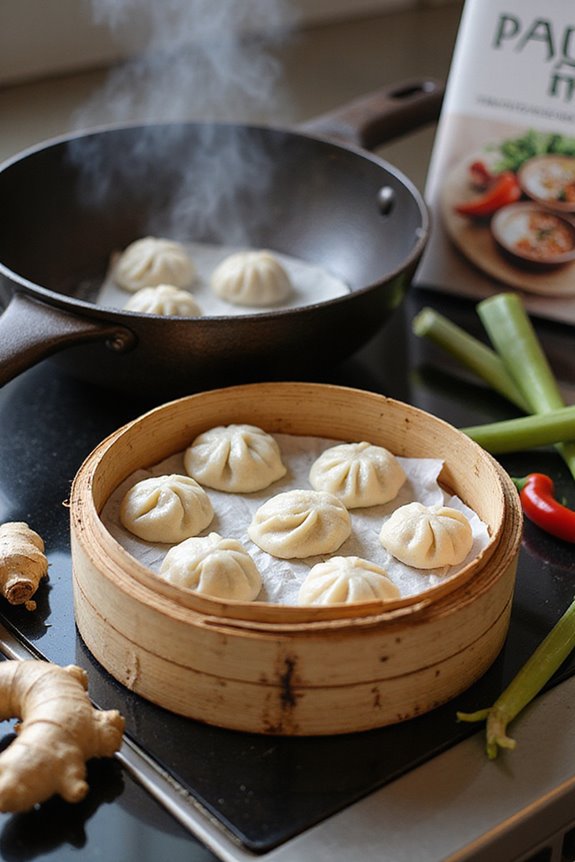
To keep our delightful dumplings fresh and ready for future feasting, we must master the magical art of ideal storage! First, let’s talk storage containers. Using thicker zipper-lock bags helps with air removal, minimizing freezer burn—like wrapping our dumplings in a cozy blanket. We should also avoid overcrowding; this allows maximum airflow around them.
When we freeze, laying our dumplings in a single layer on a parchment-lined baking sheet is key. Once frozen, we can transfer them to our bags, making sure to expel excess air. Finally, consider double-wrapping with aluminum foil for extra protection, like giving our dumplings a winter coat. Following these tips will keep our dumplings as delightful as the day they were made! Furthermore, using airtight containers can help maintain the freshness of any food items, just like how we store miso paste effectively.
Understanding Freezer Temperature and Duration
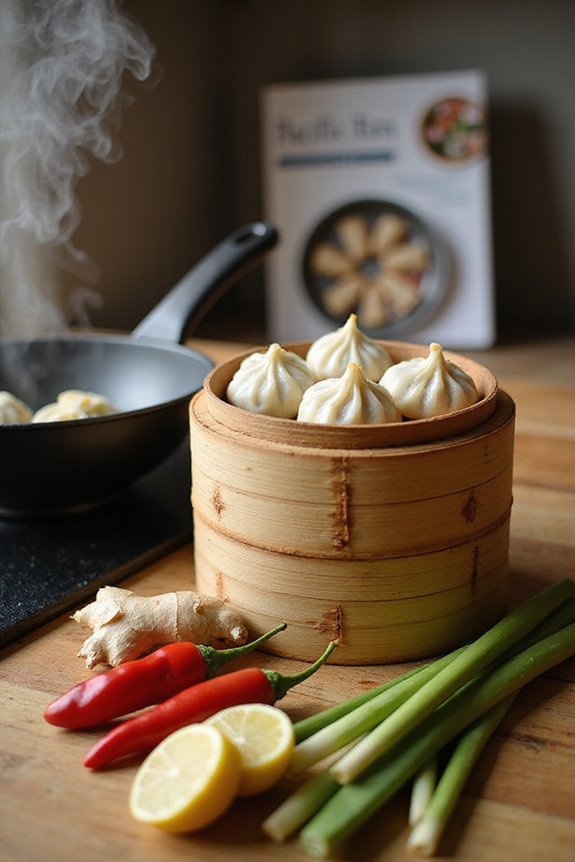
Understanding the perfect freezer temperature and duration is key to preserving our delightful dumplings! We should aim for around -18°C (0°F), as it helps maintain freezer efficiency and prevents those pesky temperature fluctuations that can ruin our culinary creations. Higher temperatures lead to freezer burn, and nobody wants that, especially during the holidays!
Let’s keep those dumplings fresh for up to two months! To achieve this, we can use high-quality zipper-lock bags and double-wrap them to prevent moisture loss. Remember, proper sealing is magical for extending storage time. Additionally, using steam cooking methods before freezing can enhance their texture and flavor upon reheating.
Cooking Frozen Dumplings
Whether we’re gearing up for a cozy night in or a festive holiday gathering, cooking frozen dumplings can be a delightful adventure in the kitchen! Here are some flavorful methods to bring them to life:
Pan-Frying Tips
- Heat: Use medium-high heat with a couple of tablespoons of oil.
- Water: After 3-4 minutes, add water to cover dumplings halfway. Cover the pan to steam until the water evaporates.
Boiling Techniques
– Simmer: Boil water in a large pot, add frozen dumplings, and let ’em float!
Steaming Methods
– Basket Fun: Steam in a basket for 10-15 minutes for tender results.
Microwave Hacks
– Quick Fix: Use a microwave-safe dish with water and cover for a speedy snack!
When you’re ready to enjoy their deliciousness, remember that utilizing high temperature settings in cooking can enhance the flavors significantly!
Let’s whip up some magical dumplings!
Special Considerations for Different Dumpling Styles
When it comes to dumplings, each style has its own delightful quirks that we need to keep in mind before freezing them. Here’s how we can master the art of freezing:
- Soup Dumplings: These beauties need gentle handling! Freeze them on a parchment-lined tray to keep that delicate skin intact and prevent broth leaks.
- Fried Dumplings: Lucky for us, their crispy surface means no extra oil is needed—just freeze them directly!
- Texture Preservation: Remember, uncooked dumplings can last up to 3 months, while cooked ones are best enjoyed within a month.
Frequently Asked Questions
Can I Freeze Store-Bought Dumplings?
Absolutely, we can freeze store-bought dumplings! Using proper freezing techniques and storage tips, we’ll keep them fresh. Just separate them, freeze individually, and store in thick freezer bags to avoid freezer burn.
How Do I Know if Frozen Dumplings Are Still Good?
We all dread discovering our frozen dumplings might be bad. Keep an eye out for expiration signs like freezer burn. Following storage tips guarantees they’ll stay delicious for our next cozy gathering together.
Is It Safe to Refreeze Thawed Dumplings?
We can safely refreeze thawed dumplings if we’ve used proper thawing techniques. Remember, dumpling safety is key, so let’s always guarantee they’re thawed in the refrigerator to maintain quality and prevent any health risks.
How Can I Prevent Freezer Burn on Dumplings?
To prevent freezer burn on dumplings, we should focus on vacuum sealing, maintaining moisture control, and using proper packaging. Together, we can preserve our delicious dumplings, ensuring they remain a delightful treat for all!
Can I Freeze Dumplings With Soup Filling?
Yes, we can definitely freeze soup dumplings! Using proper soup dumpling techniques and following freezing soup tips, like keeping them spaced apart, guarantees they maintain their delicious broth and structure when we’re ready to cook them.

